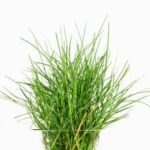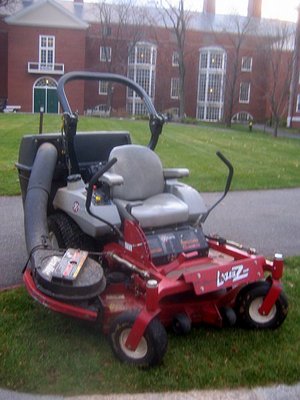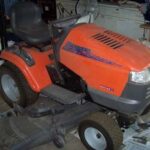Overview
The world you live in may be technologically advanced, but don’t sell your lawnmower, because there’s no grass on the market that doesn’t need mowing. Although, your grass tolerates mowing more than it needs it, proper mowing techniques facilitate growth. Mowing techniques, such as how tall it should be and other seasonal variances, differ as to the type of grass sown in your yard. The best mowing technique to help your yard grow, is keeping it at the correct height.
ProperHeights of Grass
The proper height to mow your grass depends on the type and variety of grass sown in your yard, and the temperature outside. The proper height of grass varies, depending on the strain of grass, and the time of year says “Warm Season Lawn Mowing.” You should mow common bermudagrass to a height of 1 1/2 inches during warm weather, and increase to 2 inches, when it’s hot. Hybrid bluegrass prefers a length of 1/2 to1 inch, until it’s hot, then 1 to 1 3/4 inches. Allow zoysiagrass to grow to 1 to 2 inches, before it’s hot, then 1 1/2 to 2 1/2 inches when it’s hot. Buffalo grass is healthy at 2 to 3 inches, then 3 to 4 inches when it’s hot.
Hot Weather Mowing
The middle of the summer is the main growth season, for warm weather grass. When a grass thrives in heat, it rests during the winter and begins growing when the weather warms, in the spring. While it’s growing, you don’t want to mow it too short because that accelerates growth along the turf, and stresses the grass. When grass is stressed, the growth is not as dense, and it requires more water and nitrogen fertilizer. The denseness of grass is a factor, because when it’s not dense it’s easier for weeds and other foreign growths to establish themselves.
Fall Lawn Care
In the fall, you should leave your grass long until what is above the ground is dormant, according to “Watching Grass Grow.” Leaving it long, allows the small green sprouts that provide nutrients to survive. When it’s dormant, and you’re mowing for last time of the year, set your mower blade at a height of one or two inches, because there’s little growth above the ground to worry about. Set the blade at one inch for warm season grasses, such as bermudagrass, zoysia and St.Augustine, and 2 inches for cold weather grasses like Kentucky-bluegrass, fiscue and bent grass.
Winter Mowing
“Winter Goes Green,” says the coolest temperature grass will grow is 41 degrees (F), and below that it goes dormant. Winter weather patterns change and sometimes temperatures won’t dip below that until January. If your area experiences a prolonged fall season it’s important to continue to mow until your grass goes dormant. Keep your grass at fall heights, until cold weather sets in. If you don’t your grass will grow tall enough to lay down on itself, under the snow. This causes matting and can lead to a diseased yard, in the spring.
Mowing Tips
No matter what the temperature, never cut off more than a third of the grass, in one mowing. If you want more than a third cut off, do it over the next time or two you mow. The longer the blade of grass the more leaf area it has, which enables it to produce extra energy for the roots. The roots use this energy during times of stress, like heat or lack of water.
If there is more than one variety of grass sown in your yard, relate your mowing techniques to the grass that grows the fastest.
It’s important to keep the blade on your mower sharp. Dull blades swipe the grass, which causes silver leaf tip disease, in your yard.
Bridgett Ruemmole: Watching Grass Grow: Grounds Maintenance
Jeff Schalau: Warm Season Lawn Mowing: Arizona Cooperative Extension
Tom Kelly: Winter Goes Green: Warm Weather Means Grass is Growing Earlier: Mail Online





